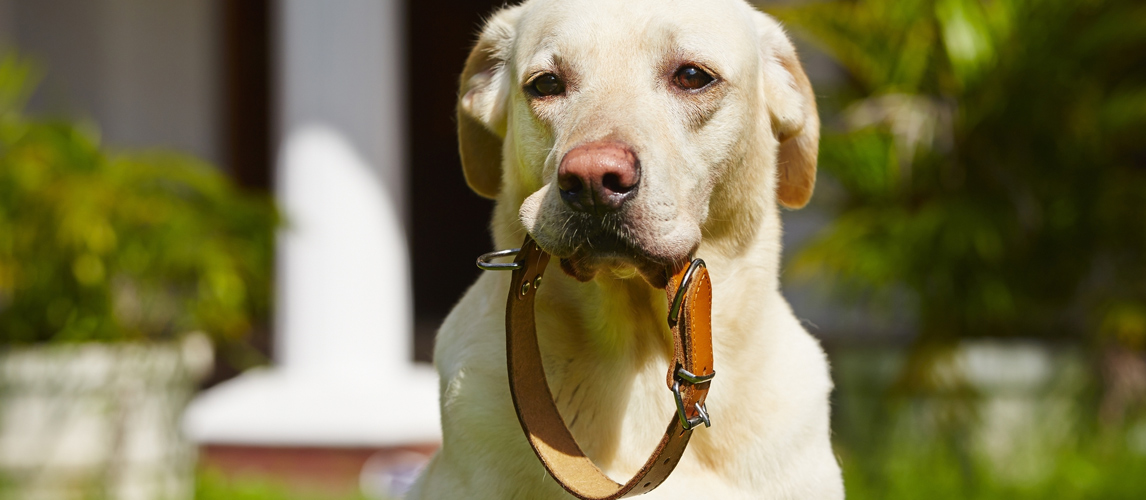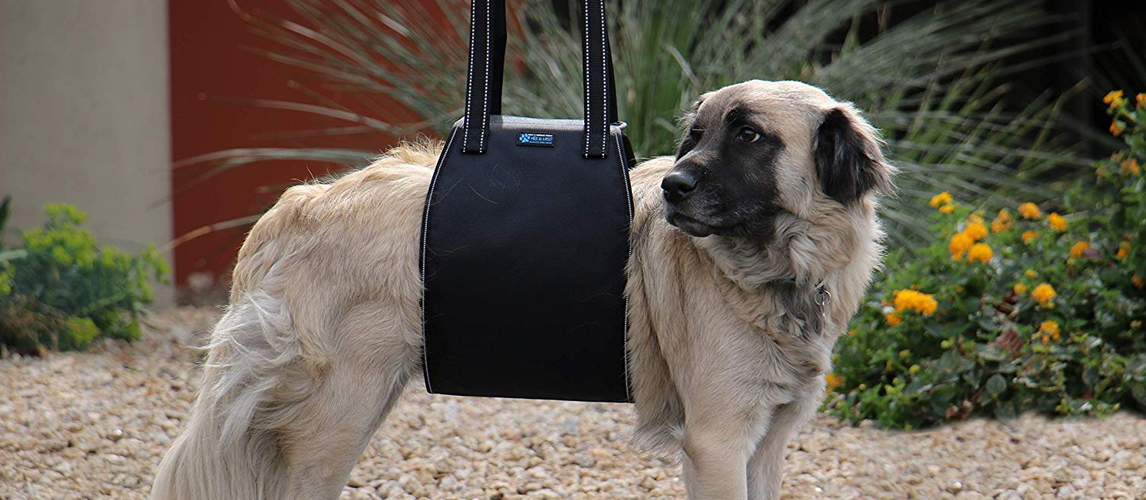The huge variety in dog breeds gives the species a versatility that cannot be denied. The differences greatly enable any potential dog owner to find the perfect match. Not everyone can tolerate certain breeds of dogs, and so it is crucial to do thorough research before making the decision. The Great Pyrenees dog is one of those breeds that are beautiful to look at, with their stunning white coat. There’s a lot to learn about the Great Pyrenees dog breed that will help you know if it’s the one for you. In this article, all the relevant information about this breed will be discussed in detail to make it easier for you. Hopefully, by the end of this article, you’ll be better equipped to make a well-informed decision or help a friend out with choosing this breed for their home.
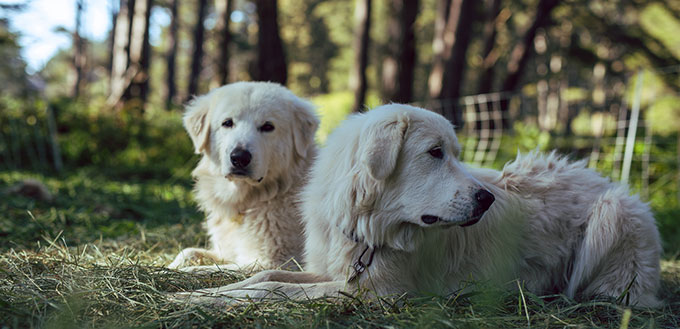
History of the Great Pyrenees
The Great Pyrenees dogs have been around for centuries, mainly as flock or shepherding dogs between Spain and France. The first published description of the breed was in a book in 1617, where the author explained why people preferred the Great Pyrenees puppies. The reason was that pure white dogs could easily be spotted by the shepherd. In 1662, the breed was mated with retrievers with black, curly coats to produce what was called the “Landseer.” Later on, after 1675, the breed became a favorite of some members of French Aristocracy. The breed was registered in the Kennel Club in London after Queen Victoria acquired one in 1850, and it was shown at the Crystal Palace. In 1909, the dogs became open for breeding in England, and Lady Sybil Grant introduced the practice.
Between the late 1800 and early 1900s, the breed began to diminish, and it took the intervention of Monsieur Dretzen and his team to revive it. They formed a club, whose main activity was to go through the mountains looking for the original forms of the breed. Also, World War I took a toll on the number of dogs left, and Monsieur Senac-Lagrange took it upon himself to revive the breed to its former glory. In 1927, under his leadership, the first formal standards of the Pyrenees dog were published, and are still used today. It was in 1931 that the Great Pyrenees breed was founded in America by Mary Crane, with assistance from her husband. For over fifty years, they made sure the breed had a conducive environment in which it could thrive. They did so by importing the breed from Europe, and by February 1933, the breed was officially recognized by the American Kennel Club.
Quick Facts About the Great Pyrenees
- They are royalty
For the longest time, the Great Pyrenees was considered to be a dog for peasants because of their work as shepherd animals. They did this work mostly for peasant farmers hence the association. However, they were later noticed by the elite in society, and their status was elevated. According to documentations from 1407, dogs of this breed were once guardians of a castle called Chateau fort de Lourdes. Located in Southwestern, France. The royal court of King Louis XIV then declared it as the Royal Dog of France in 1675. Aside from this, the Great Pyrenees has been owned by members of some royal families including Queen Victoria of England.
- They were originally livestock guard dogs
As earlier established, this breed of dog was very good at taking care of the flock, and so farmers used them for that. Their owners trusted them, and they allowed the owners to take their eyes off their animals to do other things. Due to its large size, the Great Pyrenees was employed to protect the livestock from bigger predators like bears and wolves. They were called the “Great Dogs of the Mountains” because most of them were found in that location. Their efficiency as guard dogs helped them build lasting relationships with the owners and their families. Even though they are meant to elicit fear in predators, these dogs are caring, loving, and nurturing to the flock.
- They are more than guard dogs
Aside from protecting the flock, this breed was used for peculiar jobs throughout history. For one, their blood was used to revive St Bernard in 1870 after the breed experienced a depletion of numbers. This reduction in St Bernard was as a result of avalanches and distemper at the Switzerland hospice. Also, Great Pyrenees were used to haul artillery in World War II, and they went along with supplies of artillery to the mountains between France and Spain. Another important use of the breed was in producing Landseer Newfoundlands by mixing them with Newfoundlands.
- They are nocturnal
Most predators usually come out at night when they assume humans will be asleep to attack livestock. The Great Pyrenees also knew this and was always on the lookout for those animals that could harm the flock. This means staying awake for a long time during the night as well as parading the territory. This quality makes them the perfect breed for deterring burglars and unwanted guests.
- They are a very old breed
These dogs are speculated to have been around for long with evidence of their first arrival in the Pyrenean mountains around 3,000 BC. Their fossils were found in that region and were dated to about 1800 BC and 1000BC. Some experts believe that the breed is a descendant of the Asian Minor’s white mountain dogs some 11,000 years ago.
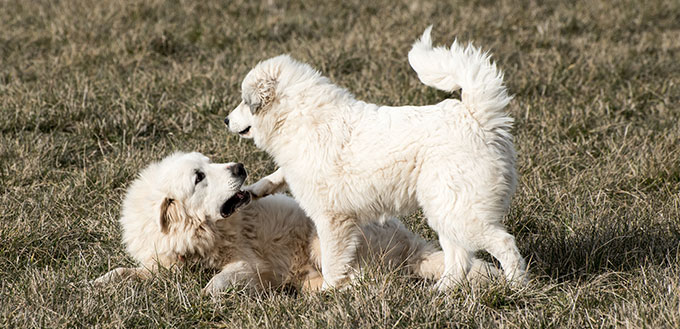
Things You Should Know About The Great Pyrenees
Training
Training is an essential process for a lot of dogs, and the Pyrenees must be trained both to be obedient and friendly. Obedience training helps with establishing the owner as being the boss of the house, while socialization training makes them more personable. Due to their fast development and large size you must train them at an early age so exert dominance and control terrible habits. Also, expose them to different experiences to get them to adapt more to your lifestyle. Training starts with getting the right tools such as sturdy dog leashes and chew toys as well as treats to serve as motivation. The leash should be strong enough to help you hold on to the dog even if it pulls too hard. The collar should also not be too tight that it hurts the animal. Each session should be about 10 to 15 minutes so that your dog does not become bored, and there should be as little distractions as possible. Start with easy commands and gradually build up to more advanced ones while being patient with the animal. Make sure the training sessions are consistent to prevent the dog from forgetting, prolonging the training time.
Feeding
Dogs need to be fed a nourishing diet of protein, carbohydrates, and fat to keep them healthy. The amount of food you feed your dog will depend on things like age, dietary requirements, size, activity level, and metabolism. An active dog will need more food while a young puppy will need exceptional food. Ideally, the Great Pyrenees should be fed four to six cups of dry dog food with very high-quality twice a day. It is better for you to measure their food than make it available throughout the day. This will keep them in shape since they need it to perform their duties. If you notice they are getting overweight, you should reduce their food and engage them in more exercise. You can include snacks, including dog-safe fruits and vegetables, which will contain vitamins and minerals to supplement their meals.
Grooming
External maintenance of your dog is essential to their overall wellbeing as much as the internal care. It involves brushing hair and teeth, nail clipping, and sometimes bathing. Great White Pyrenees are average shedders and usually need about 30 minutes of brushing every week. The silk-like coat also makes excellent insulation for birds newborns, and so you can leave them outside for birds to find. The Great Pyrenees has a topcoat, which is thick, long, and coarse in texture, as well as an undercoat. The top layer is usually wavy or straight but never curly and a dense and woolly undercoat. The males have a more pronounced ruff around their neck and feathering behind their legs. There should be a plume present on the tail as well as short hairs around the face and ears. There are white Pyrenees with tan, gray, and reddish-brown markings on their ears, tail, and sometimes their body. The coat serves as natural protection against the sun, and so you must not trim it when it is hot. They usually shed dirt, and so do not need that many baths however only use high-quality shampoo when the need arises. Check the dog’s ears once a week for bad odors and redness, which are signs of an infection. To clean the ears, use a cleaning solution recommended by a vet and cotton swabs to wipe the dirt away gently. Every two to three times a week, brush the Pyrenees’ teeth to prevent bacteria build-up and dental problems. Also, trim their nails to keep them healthy and yourself safe from scratches during playtime.
You may also like our reviews of the best dog shampoo, nail clippers, dog ear cleaners, dog hair clippers and dog toothpaste.
Health
The Great Pyrenees weight is about 110 to 130 pounds for males and 90 to 115 pounds for the females. They can also grow as high as 31 inches and live for 10 to 11 years long. During their lifetime they experience some illnesses that may reduce their quality of life. This breed suffers from bone-related issues because they grow at a rapid rate. Also, because the Great Pyrenees size is large, this fast pace may cause growing pains for them. For this reason, their bones need special treatment, and they will fill out at age four or five. They may also experience hip dysplasia, which may bring them discomfort when moving since the joints do not fit well together. The parents often pass it on to their puppies, and so you should find out the parents’ medical history before getting the infant. A life-threatening disease the breed experiences is Gastric Torsion, where the stomach twists after being distended with air or gas. This prevents the dog from getting rid of the air, causing blood flow to the heart to become irregular, thereby affecting blood pressure. The fall in blood pressure can kill the dog if it does not get medical attention immediately. Cataracts are illnesses that affect older dogs, causing impeding eyesight by making the eye lens opaque to produce cloudy vision. It is characterized by the rubbing of the eye and can be corrected through surgery.
Temperament
The Great Pyrenees temperament is calm and gentle, and they are not shy or nervous. It is important to socialize the puppy, so they grow to be well-mannered adults. Enrolling them in a daycare for dogs will help with exposing them to different people and other dogs so that they become friendlier. This breed is known to be the most serious of all breeds, but they are loyal, devoted, and caring. They are great around children since it is in their nature to protect anything small and fragile. They are independent and can be stubborn, and it does not help that they are large. You should always have them on a leash or in a well-fenced area to prevent them from running off.
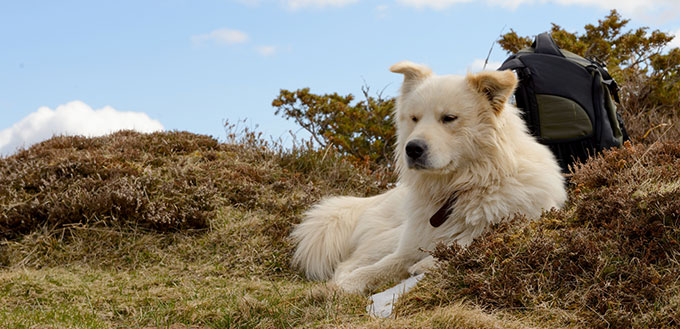
To Summarize
Getting a dog should not be a tiring experience if you have all the information needed to make a choice. The Great Pyrenees is the perfect breed for those who want a loving, yet protective companion. The dog will protect what they love with its life and will not cause much trouble. Even though they are independent, they enjoy attention from their owners, especially children, and little training will make them very friendly. If at any stage you need more clarification on this breed, a veterinary doctor will be able to help.
Sources:
- Great Pyrenees, PetMD
- Great Pyrenees, VetStreet





